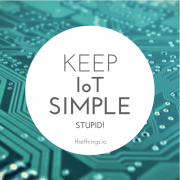How IoT will change Sport
First, it was the Health app from Apple or Nike+, Nike + Running, Runtastic mobile apps…, and now lots of wearables and other devices are connected to the internet to measure, not only your steps, even more and more. From bracelets to t-shirts that control your movements. The inimaginable, has become real to change our lives. Do you want to know more? Keep reading, we are going to show you the latest news in the Internet of Sport Things field.
Fitness
To practise Fitness is in style. Everyone knows what fitness it, and most people around the world have added it to their lifestyles. The Internet of Things fitness devices’ main role is to help athletics practise it in a better way.
If we think about running, the first device that comes to our minds is FitBit. What is it? It is a brand of connected bracelets that allow the customers to track their day-to-day. Your daily steps, the distance you have walked, the calories you’ve burned… everything is tracked with one FitBit device. To monitor your sleep at night, to wake you up with a quiet vibration, act as a clock or ask at phone calls (yes, you can connect it to your smartphone) are some of other capabilities Fitbit offers to customers. But there’s even more! All the data generated can help you see your own personal progress and keep the control. There are other sport brands that offer a similar product as FitBit, for example, Nike, with its device called FuelBand.
Also, the Internet of Things has moved to the fashion field. Have a look to the Athos. This is a connected t-shirt that measures muscle performance in real time. It is capable to all sports, from spinning to yoga. Its role consists in changing the way we train our bodies. Watch the video clicking here!
“Improve your mental fitness, no gym membership required” is the claim that MUSE uses to introduce itself to consumers. MUSE is a brain sensing headband. But what does it do? This device can improve your emotional state, help to form a habit, strength the self-control ability (so you can also control your stress level and work to reduce it), gain concentration… It works detecting and measuring the activity of your brain. At the end, MUSE identifies when your mind is calm and focused or when it is wandering by analysing the changes that the human brain experiences.
Safety
The Internet of Sport Things also allows us to protect the players in a really powerful way. Most sports are considered as a mere entertainment, but some are really risky for its players. That’s the reason why some companies have created devices that actually can track this kind of things. Let’s talk about it.
Imagine a player which is hit, so he/she receives one or more impacts. Then, a sensor (located inside the helmet) measures the impact and transfers the information to his or her coach and medical team. This allows doctors to determine if it is safe for the player to continue in the game. This is exactly how Riddell InSite Impact Response System works, so it analyses and assess the risk of hits. Look:
FITGuard by Force Impact Technologies is a device that helps to detect brain injuries, such as concussions. This also advises the athletes when they have a high probability of a head-injury, so in that kind of situations, they should not return to play. It uses LED lights, which change colours depending on the intensity of the impact.
“Sportainment”
As we have said earlier, some sports are seen as a kind of entertainment. Nowadays, the main problem that entertainment companies need to cope with is the diversity. Let us explain it. Most TV entertainment channels offer exactly the same programmes and the only difference between them is the logo of the company.
IoT has the answer to solve this problem. Why not to see sports from other different angles? Imagine you are watching a soccer match and you are able to track the road of the ball from its perspective! This could also be more accurate and could avoid mistakes.
The Cairos Systems track soccer balls by using a chip that is in the middle of it. There are sensors also in the penalty area and they detect when the chip passes it and goes directly to cross the goal-line, where there are more sensors. At the same time, referees wear a watch that, when ball sensors cross the goal-line, vibrates and makes an alarm sound.
Can you imagine it?
These are just few examples, but there are a lot of cool sport things that can be connected to the Internet. thethings.iO does connect these kind of things to the Internet. So follow us on Twitter and stay tuned for the newest news of thethings.iO!






